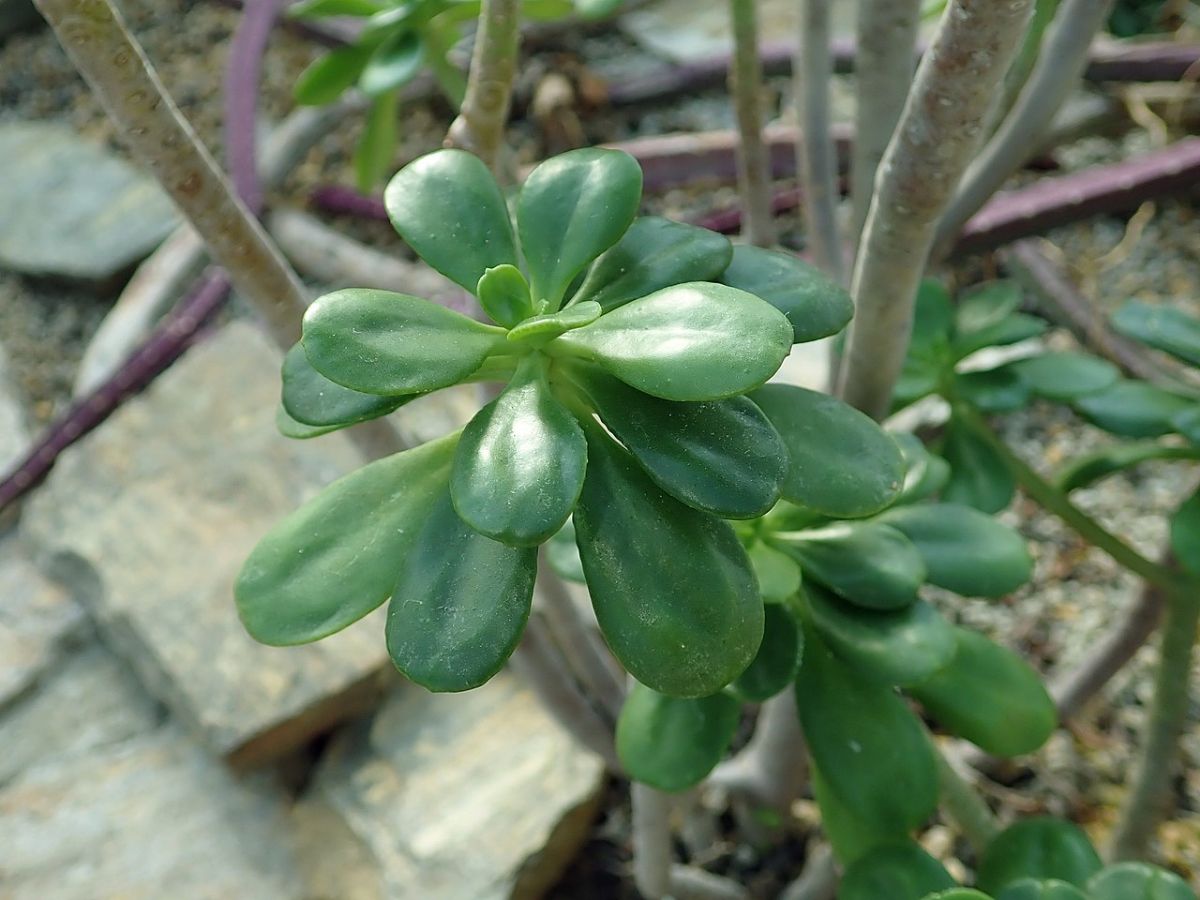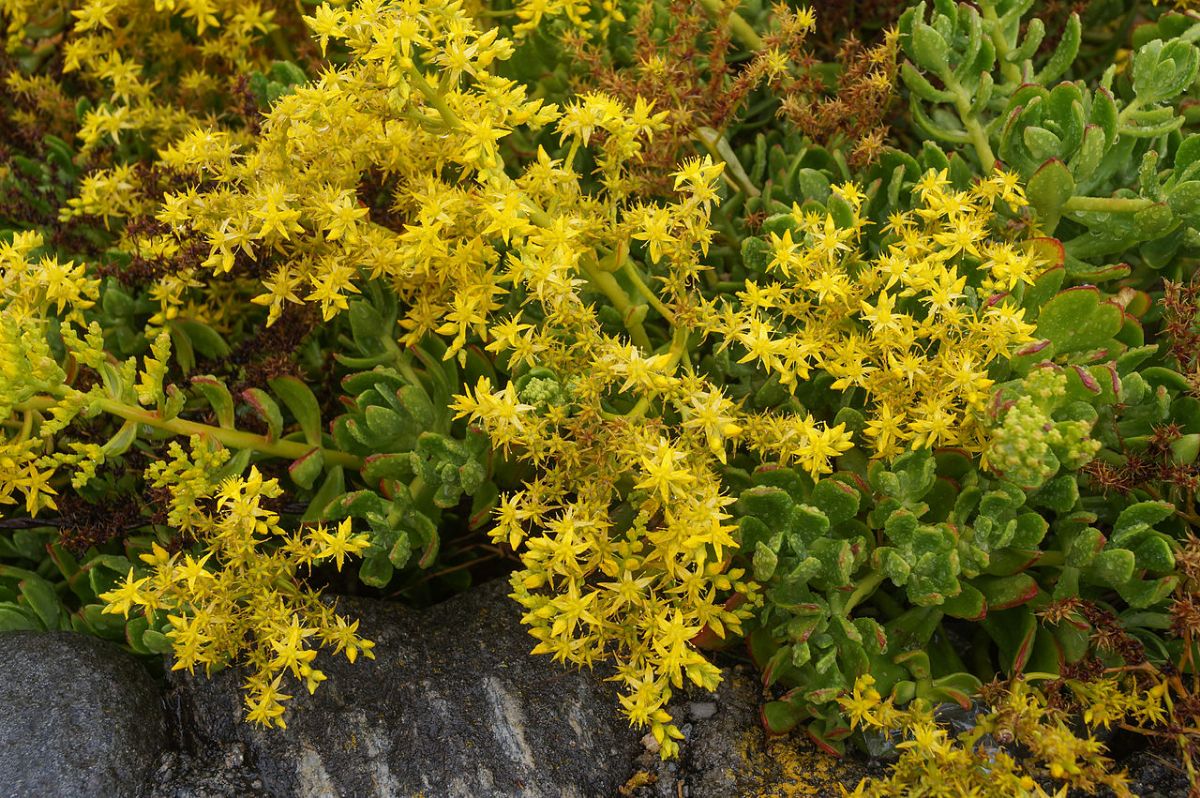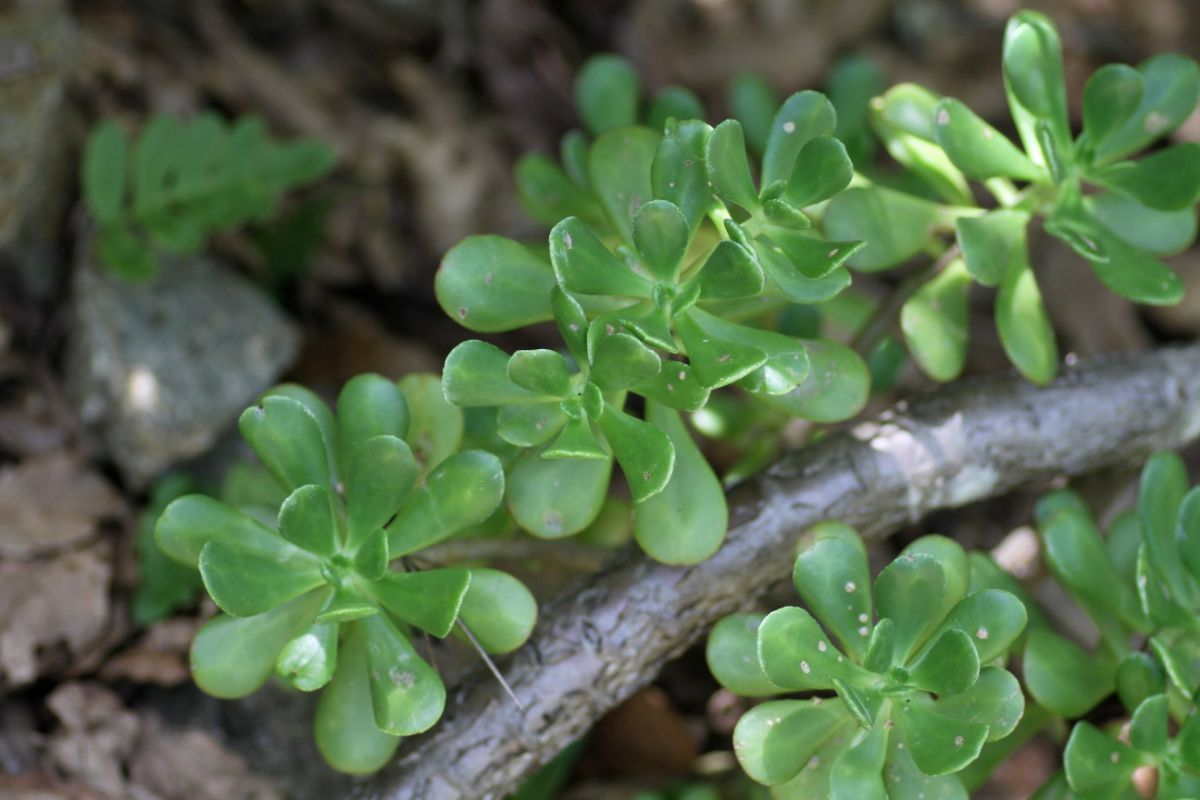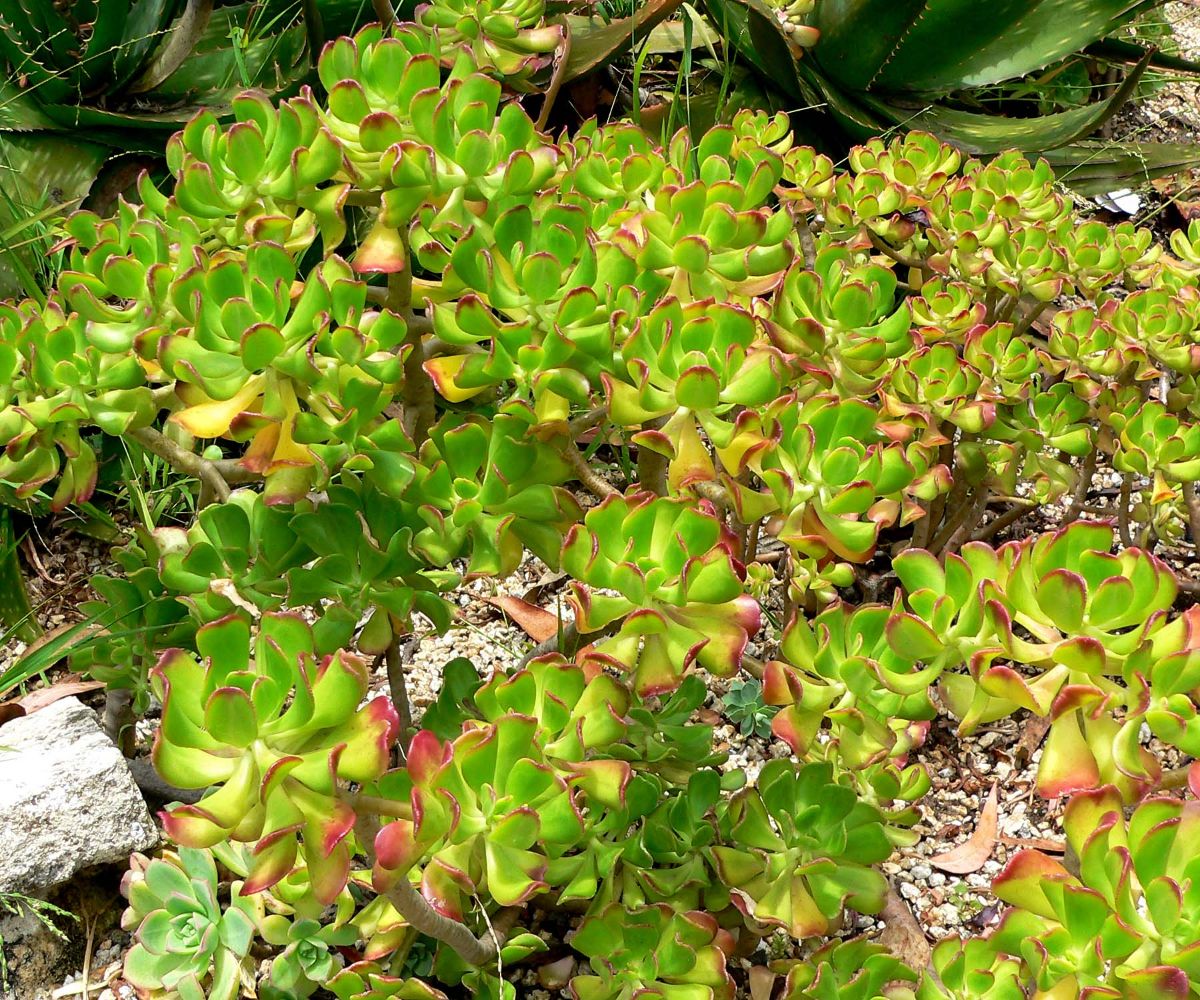
If you like succulent plants, surely you have several of them in your house. One of the best known and appreciated is the Sedum dendroideum, known by many other names.
But what do you know about this succulent? What it's like? What are your cares? In this file you will be able to find everything you need to know about it.
What is Sedum dendroideum like?

The Sedum dendroideum plant belongs to the Crassulaceae family. Of Mexican origin, it is also known by other names such as Tear of Mary, Immortelle and Immortelle Yellow.
It is a perennial plant that has a very branched stem. This can reach measure about 75 centimeters. As for its leaves, they are distributed in the form of a rosette, always at the ends of the stems and curved at the tip. Most of the time they are green, but depending on the sun they receive, they can change their hue (normally, with the sun they will turn red and the same will happen with the cold).
If you take good care of her, at some point between mid-winter and spring it will give you flowers, and these are the ones that give it that nickname of Yellow Immortelle. And it is that they are of that color, in addition to having a shape similar to a star.
Sedum dendroideum care

Now that you know a little more about Sedum dendroideum, it's time to think about how to care for it at home. It is true that we are talking about a plant that is very easy to care for, but that does not mean that it does not have some needs that you will have to take into account. Which? We'll tell you right away.
Location and temperature
We start with the location, and in this case the best place where you can have this succulent is outside the home. It loves the sun and you should not worry that it will be in a very hot or very dry area, because it will adapt perfectly. In fact, as long as you have some sun, you won't mind being in a hot zone or one where there are frosts and temperatures drop a lot.
Yes, humidity does not tolerate it well, but if you put a substrate that drains well and you don't water it too much, nothing will happen to it.
The important thing for this plant is light. It is essential that they have many hours of light. Nor should it be placed in direct sunlight (although if you do it, its leaves will normally turn red), but it should provide that clarity.
As for the temperature, as you have seen, it adapts to both cold and heat.
Substratum
As good succulent that is, it is important that you provide a appropriate substrate for succulent plants and cacti, since this way you can be sure that it drains well and that the roots do not rot.
You can buy it made or do it yourself mixing perlite with a nutrient-rich organic soil. Of course, we recommend you add more perlite so that the roots are looser. Do not worry that it will not mean that the plant is going to fall if you plant it well.
Even so, they don't require much of the floor either, so you won't have a problem placing it on anyone.
Irrigation
Irrigation has two phases. The first, from autumn to the end of winter, which will be null, or almost null (It will depend on the temperature there is). And the second, from spring to the end of summer, where it will be watered at least once a week.
Sedum dendroideum tolerates drought very well, so you won't have a problem if you forget. But the exact irrigation guidelines will depend on the climate you have in the area since, for example, if there is humidity, it should not be watered so much.
Subscriber
Fertilizing, unlike other plants, must be done only once a year, in autumn, and it will be done with compost, manure...
Pruning
In order for the plant to be healthy and compact in shape, it is recommended that be pruned at least once a year. This pruning will always be done in mid-spring, and as it grows you can trim more lightly.
Plagues and diseases
As you know, the Sedum dendroideum is an "all-terrain" plant that is hardly affected by anything. In the case of pests and diseases, neither. But there is something you should keep in mind: Water. does not tolerate it too much and it can easily lose its roots because of it. So that's the main thing to keep in mind.
Reproduction
Multiplying your Sedum dendroideum is not complicated at all. In fact, it multiplies itself. When If you see the so-called "sprouts" appear around the plant, it means that it has "children". If you separate them, carefully, and plant them in a pot, it will grow just like its "mother" and will also generate children.
Another option to multiply it is through the leaves or the stem when under a rosette. You have to leave them in the air for a few days so that the wound closes (it is the best way to ensure that it does not die) and then plant it in the ground and water only when the substrate is dry.
You could also put them in perlite. You would only have to fill a container with it, put the leaves and pour water. In a matter of days the roots should appear, but be careful, because if the perlite dries out these roots could disappear and rot the plant (due to the water).
Uses

You should know that Sedum dendroideum is not only a decorative plant. Due to its great resistance and the ability to adapt to any environment, it is one of the best candidates to be in your garden.
But also, in Brazil, This plant is used in medicine. In fact, the juice from the leaves of the plant is recommended for those who have gastric or inflammatory problems.
He is also recognized as antinociceptive use (i.e. acting on the nerves) and anti-inflammatory (although this has not yet been validated in humans).
As you can see, Sedum dendroideum is an ideal plant for those who have problems with the survival of their plants or who cannot provide an ideal environment for them. What do you think of this succulent? Do you have it at home?